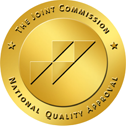What are hallucinogens?
Hallucinogens are psychedelic or mind-expanding drugs that cause intense changes in a person’s perception of reality. They include any drugs that cause a person to have visual or auditory hallucinations in which they see or hear things that aren’t real. Commonly used hallucinogens include LSD, PCP, mushrooms and Ecstasy (MDMA).
What does a hallucinogen look like?
Hallucinogens are a category that many illicit drugs fall into, so they appear in many different forms. They can be sold as pills, liquid or on absorbent paper. Some hallucinogens occur naturally in fungi and other types of plants, such as peyote and psilocybin (found in mushrooms). Peyote is cut from the root of the peyote cactus and sold as a dried out, disc-shaped button. Mushrooms containing psilocybin can be sold fresh or dried.
How are hallucinogens used?
Hallucinogens can be used in a variety of ways, including orally, dissolving them in liquid to drink, snorting, injection or smoking.
Effects of hallucinogens
Physical effects include:
• Extremely dilated pupils
• Warm, clammy skin
• Excessive perspiration
• Impaired coordination
• Nausea
• Dizziness
• Trembling
Psychological effects include:
• Distorted sense of sight, touch and sound
• Euphoria
• Warped perception of time
• Mood swings
• Anxiety or paranoia
• Frightening hallucinations
Long-term effects include:
• Flashbacks
• Depression
• Damaged memory and concentration
• Personality and mood changes
• Increased risk of mental problems in some people
Consequences of hallucinogens
A severe overdose of some types of hallucinogens can cause respiratory depression, coma, seizures and sometimes death, although death exclusively from overdose is extremely rare. Hallucinogenic deaths are generally a result of suicide, accidents or dangerous behavior as a result of being intoxicated under the drug’s effects.
Hallucinogen Facts and Statistics
• Approximately 34.2 million Americans aged 12 and older (or 13.8% of the population) reported trying hallucinogens at least once. (NSDUH, 2007)
• 9.1 % of Americans over the age of 12 reported using LSD in their lifetime and 2.5% reported using PCP in their lifetime. (NSDUH, 2007)
• 7.8% of high school seniors used hallucinogens other than LSD in 2008 (this “other” group includes peyote, psilocybin and others). (MTFS, 2008)




